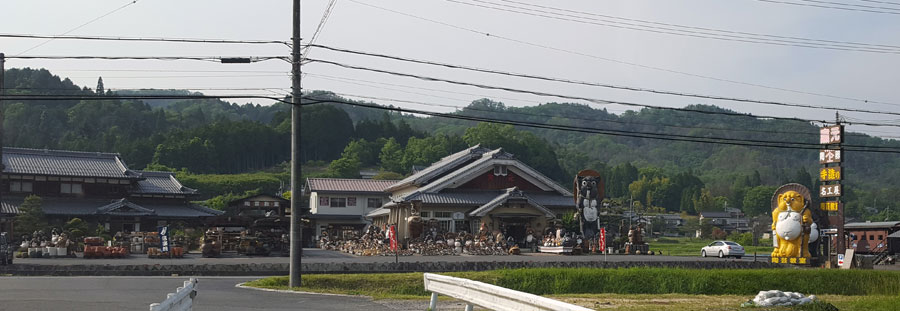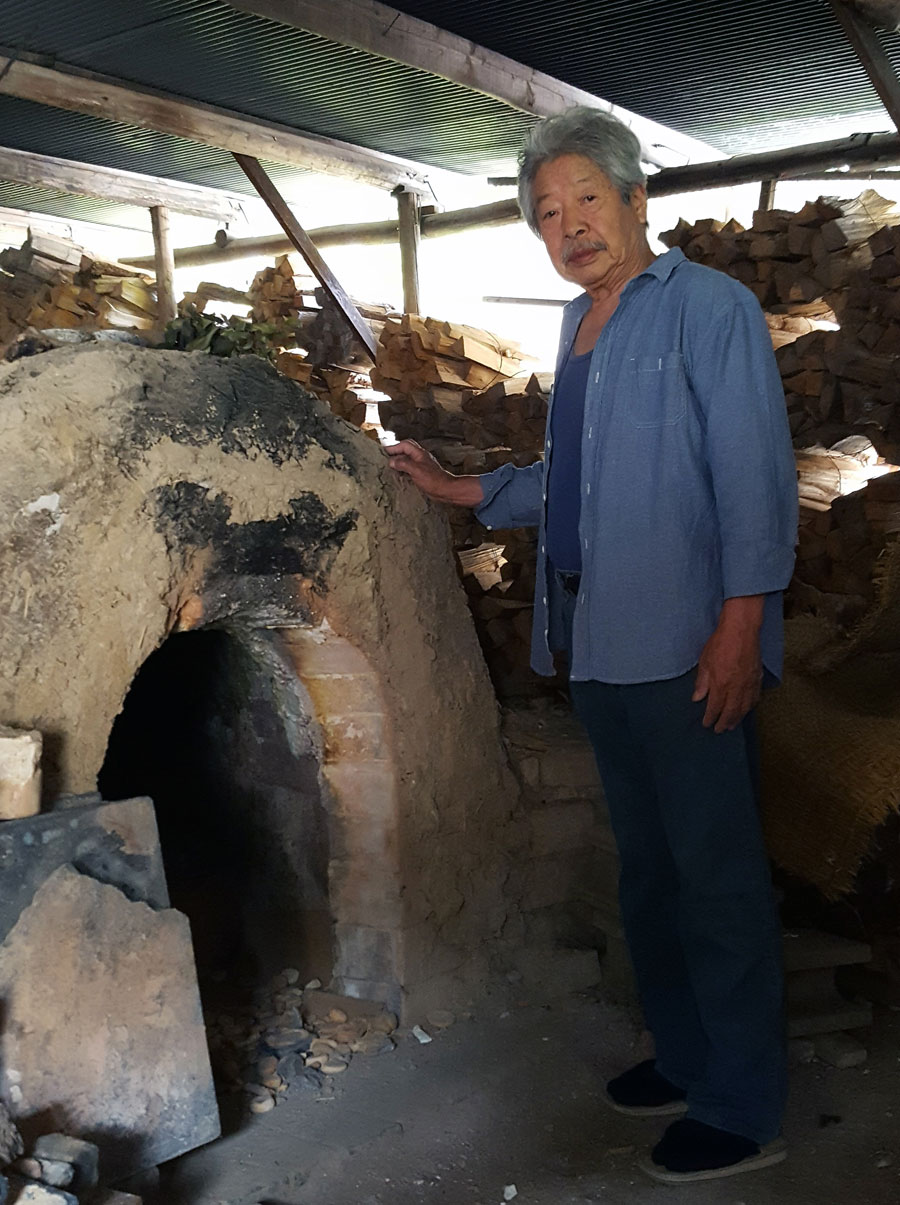Note: From the Fire: Contemporary Japanese Ceramics from the Robert and Lisa Kessler Collection is on view at the Denver Art Museum through October 1, 2017. Included with general admission, free for members.
The Shigaraki Valley
Shigaraki is an expansive valley about 30 miles away from Kyoto, Japan’s historic capital. It is also the name of a town formed by many villages in the valley, a historic ceramic center since the thirteenth century. For a long time, Shigaraki had been regarded as one of the so-called “Six Old Kilns” in Japan, with its early products made primarily for local farmers’ needs.
Starting in the sixteenth century, due to the favoritism of tea masters, Shigaraki ceramics became popular in Japan. After World War II, western collectors started to admire the high quality, elegance, and simplicity of Shigaraki’s high-fired unglazed ceramics, which eventually influenced many western museums to collect them. Today, Shigaraki has become a destination for many western tourists.
Diverse Techniques
With its long tradition of craftsmanship and abundant supply of unique clay, Shigaraki continues to excel in ceramic making in Japan. Many ceramists set up their studios and kilns in the Shigaraki valley. The artistic practices of these artists are very diverse. Some of them create non-functional, free-form ceramics, completely different from any traditional pots. Yet many of them, still attached to tradition, use old techniques to make new products.
Among the 35 artists featured in From the Fire, eight are making Shigaraki-style ceramics or living in Shigaraki.
In late May 2016, I went to Shigaraki to gather materials to prepare for the exhibition. I was able to meet three ceramists whose works are displayed in the show: Kohyama Yasuhisa, Takahashi Rakukai, IV, and Ishiyama Tetsuya. It was a delightful journey to see their works in their studio, to learn about their practice, and to listen to their stories next to their kilns.
Kohyama Yasuhisa
Kohyama Yasuhisa’s studio and kilns are located on a beautiful stop in the central Shigaraki valley. He is well known for his sculptural ceramic arts, different from traditional Shigaraki forms and styles. Yet born as a Shigaraki native in 1936, Kohyama Yasuhisa has been profoundly influenced by the old tradition.
His sculptural works were fired in traditional wood-fired kilns. He particularly favors anagama, a kind of tunnel kiln with a single-chamber. During the long process of wood-firing (which usually takes more than a week) Kohyama just relies on his visual observation of the color of the fire to judge the kiln temperature, a very old way that has been used by potters for almost a thousand years in Shigaraki.
Takahashi Rakukai, IV—A Traditional Craftsman
The Takahashi family is one of the old potter families in Shigaraki. The family has been making ceramics for five generations. They built two kilns behind their house, making very traditional Shigaraki-style vessels.
Born in Shigaraki in 1925, Takahashi Rakusai IV succeeded to the family mantle in 1976. He was recognized as a “Traditional Craftsman” by the Japanese Ministry of Economy, Trade, and Industry in 1976. Now his son Rakusai V has taken charge of the family business. Shortly after my visit, they started firing their kilns. They generously supplied photos of this firing, which have been used in the exhibition.
Ishiyama Tetsuya—One of the Youngest Ceramists
Ishiyama Tetsuya is one of the youngest ceramists in this exhibition. Born in 1973, his ceramic works include both sculptures and vessels. Although his studio is in Shigaraki, he has created many works outside the Shigaraki tradition. His signature works are pots with wave-pattern surfaces, and he uses bright colors to create a balance between surface and form. Unlike the other two artists, Ishiyama uses electronic kilns to fire most of his works.
However, he told me that he also creates traditional forms of works, and to fire them, he uses the community’s wood-firing kilns. It is evident that even for innovative artists like Tetsuya, the force of Shigaraki’s tradition is still strong.





